Welcome to the serene world of minimalist home decor, where simplicity meets elegance in the most enchanting way. Whether you’re a novice dipping your toes into the vast sea of interior design or a seasoned decorator looking to refine your style, minimalist decor offers a refreshing approach that emphasizes quality over quantity. This design philosophy is more than just a trend; it’s a lifestyle choice that encourages thoughtful living and intentional design.
In this article, you’ll discover how minimalist decor can transform your living space into a tranquil haven that reflects both functionality and beauty. We’ll guide you through the essential principles of minimalism, from selecting timeless pieces that speak to your personal style to mastering the art of decluttering. By the end, you’ll be equipped with practical tips and insights that will empower you to create a home that feels spacious, inspiring, and uniquely yours.
As we delve into the nuances of minimalist design, you’ll learn how to balance aesthetics and practicality without sacrificing comfort. Our journey will explore everything from choosing the right color palette to incorporating natural elements that breathe life into your home. Whether you’re starting from scratch or looking to refresh your current decor, you’ll find that embracing minimalism can lead to a more organized, harmonious, and ultimately fulfilling living environment.
Understanding Minimalist Design Principles
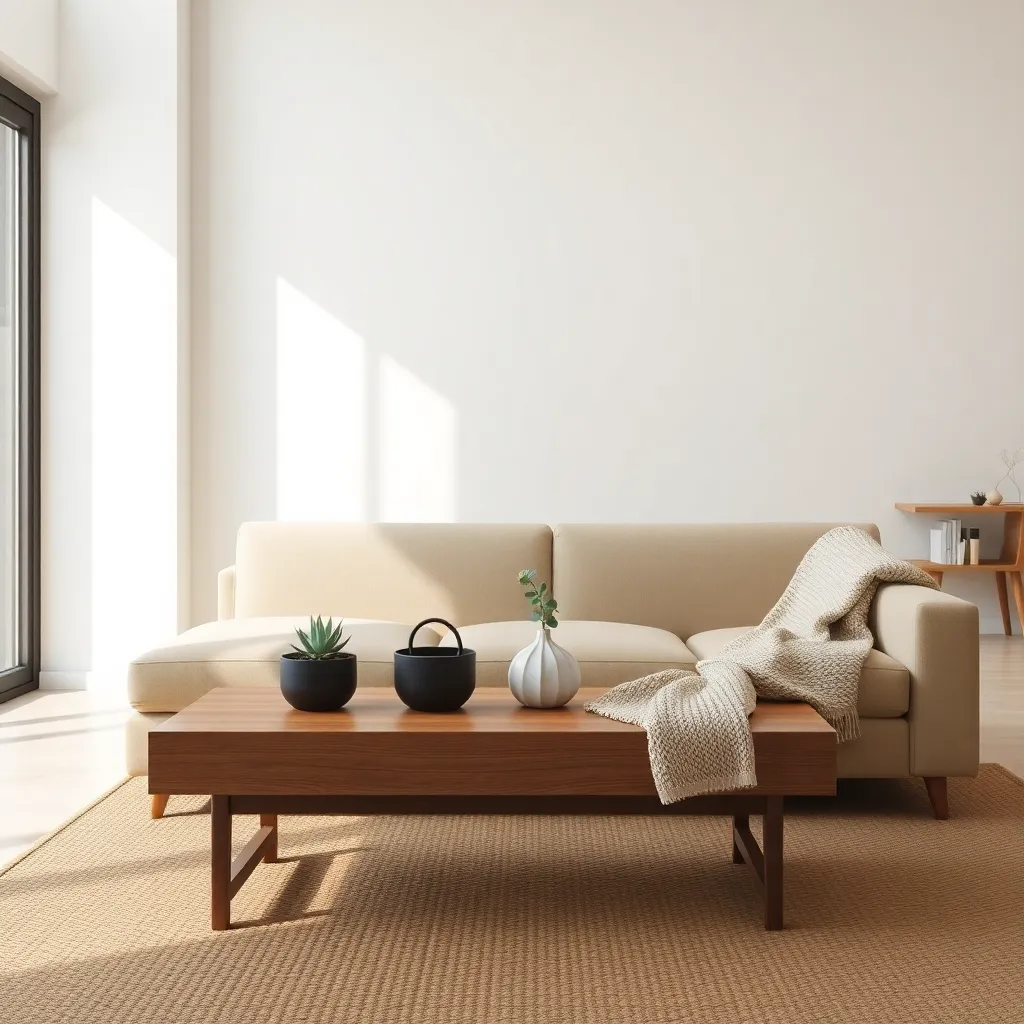
Minimalist design revolves around the concept of “less is more,” focusing on simplicity and functionality. To achieve this, start by decluttering your space and keeping only the essential items that serve a purpose or bring you joy.
When selecting furniture, opt for pieces with clean lines and neutral colors to maintain a sense of calm and order. Consider materials such as wood, metal, and glass, which add texture without overwhelming the room.
Placement is key in minimalist design; aim for balance and harmony when arranging furniture. Use negative space effectively to highlight the beauty of each piece and allow the room to breathe.
Color schemes in a minimalist home should be restrained and cohesive. Stick to a palette of whites, greys, and beiges, and introduce subtle pops of color through accessories like cushions or artwork for a sophisticated touch.
Choosing Functional Furniture Essentials
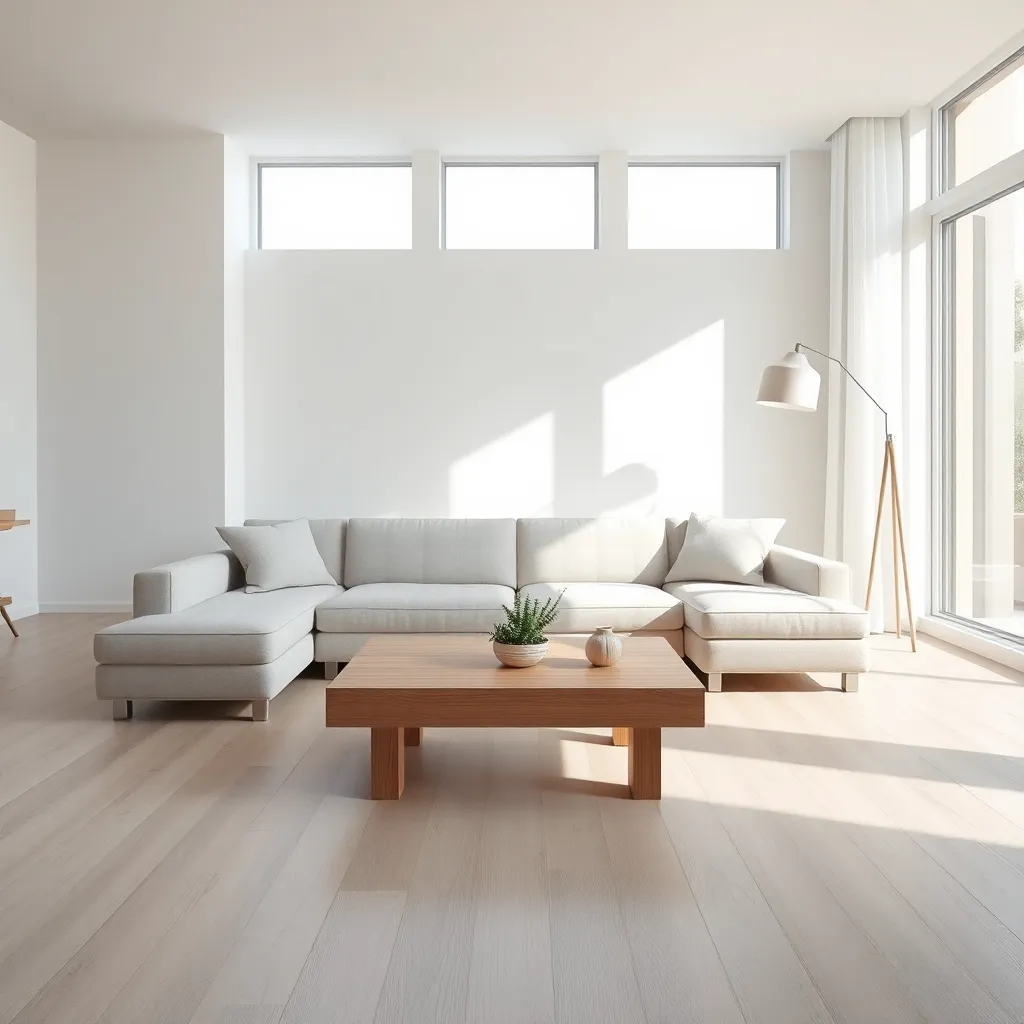
When selecting functional furniture essentials for a minimalist home, focus on pieces that serve multiple purposes. Opt for furniture with built-in storage to help maintain a clutter-free environment, such as a bed with drawers or a coffee table with shelving.
Consider the scale of your furniture in relation to the room size to ensure a balanced look. A large sectional may overwhelm a small living room, so instead, choose a sleek sofa with clean lines that complements the space while offering ample seating.
Choose a neutral color palette for your furniture to create a calm and cohesive atmosphere. Shades like white, beige, and gray work well in minimalist spaces, allowing you to add interest with textures and subtle patterns.
For a touch of sophistication, mix different materials like wood, metal, and glass in your furniture selection. Combining these materials can add depth and visual interest without compromising the minimalist aesthetic.
Placement is key to enhancing functionality while maintaining a minimalist feel. Arrange furniture to promote open pathways and ensure each piece is accessible, which not only enhances usability but also contributes to a clean, organized look.
Incorporating Neutral Color Palettes
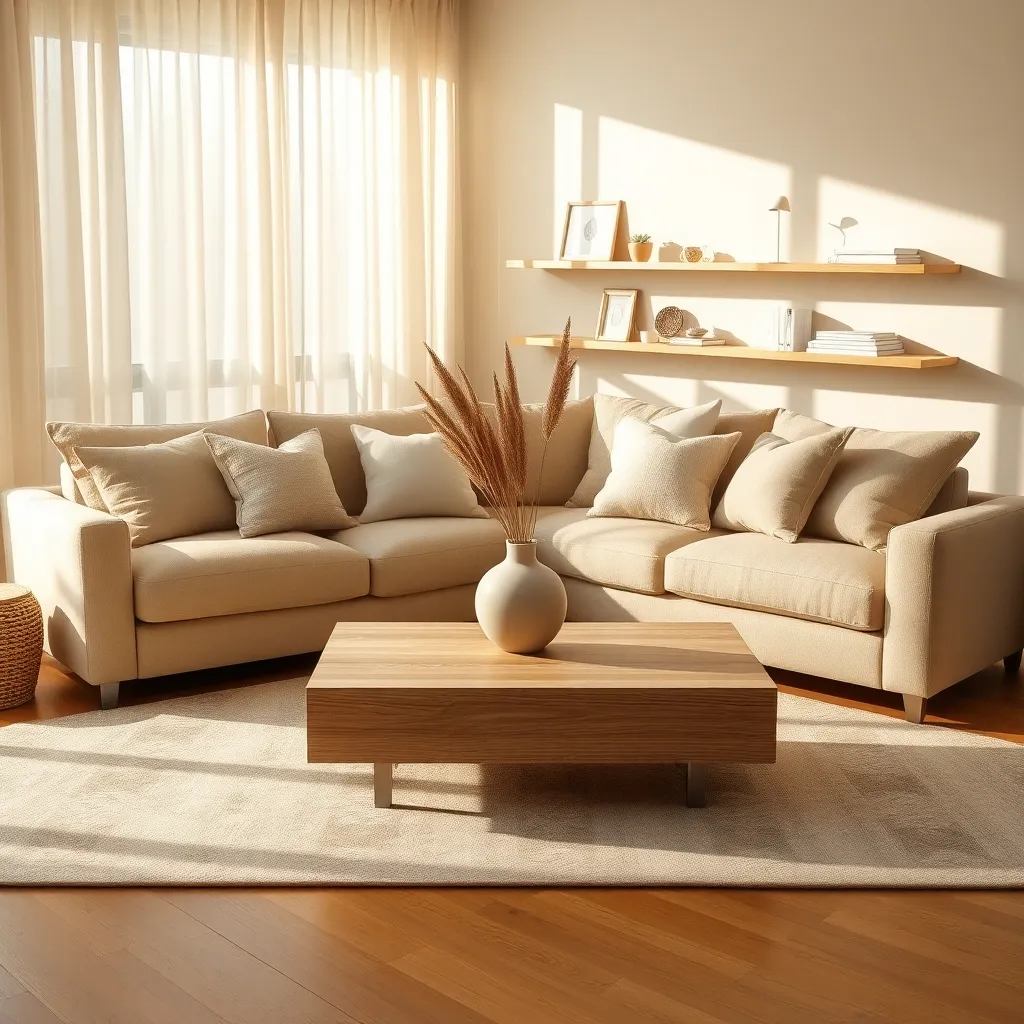
Neutral color palettes form the backbone of minimalist home decor, offering a sense of calm and timelessness. To achieve this, consider using shades like whites, beiges, and soft grays that create a serene backdrop for your space.
Start by selecting a dominant neutral color that resonates with your personal style and complements your home’s natural light. Paint walls and ceilings in a light neutral tone to enhance openness and provide a versatile canvas for your decor.
Layering different textures within the same color family can add depth and interest without overwhelming the space. Incorporate various materials such as linen, wool, and leather in your fabrics and furnishings to create a rich, tactile experience.
Furniture selection should focus on clean lines and simple silhouettes to maintain the minimalist aesthetic. Opt for pieces in neutral hues, but don’t shy away from mixing different textures—for instance, a plush beige sofa paired with a sleek wooden coffee table.
Enhancing Space with Natural Light
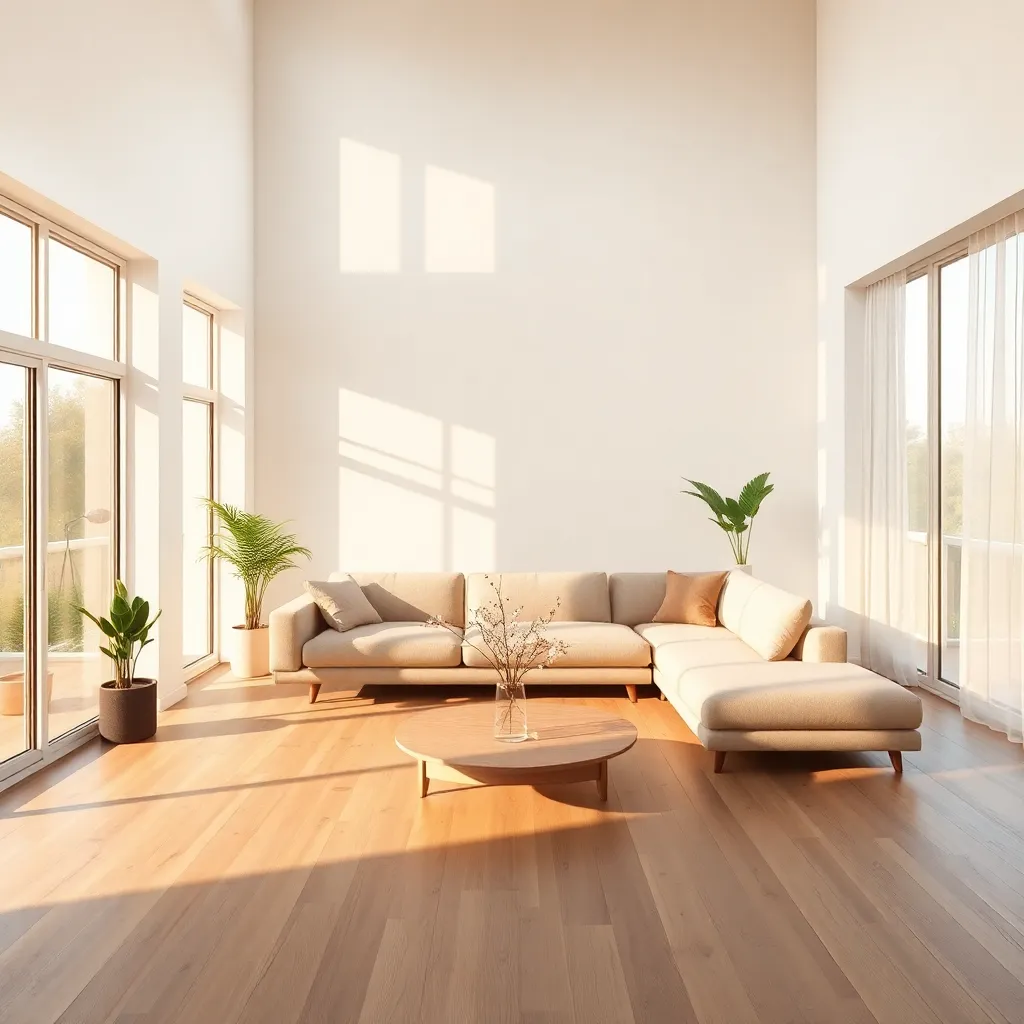
Natural light is a quintessential element in minimalist home decor, offering both aesthetic appeal and functional benefits. To maximize natural light, consider using sheer curtains or lightweight blinds that allow sunlight to filter through while maintaining privacy.
Positioning mirrors strategically can amplify the light entering your space, making rooms feel larger and brighter. Place mirrors opposite windows to reflect natural light throughout the room, enhancing the overall ambiance.
For those starting out, painting walls with a soft white or light neutral color can significantly brighten a space by reflecting more light. Advanced decorators might consider using semi-gloss paint on ceilings to further bounce light around the room, creating a luminous effect.
Furniture selection plays a crucial role in light enhancement; opt for pieces with sleek lines and lighter hues to prevent visual clutter. If possible, choose furniture with glass or open shelving to allow light to pass through, keeping the room airy and spacious.
Maintaining Clutter-Free Environments
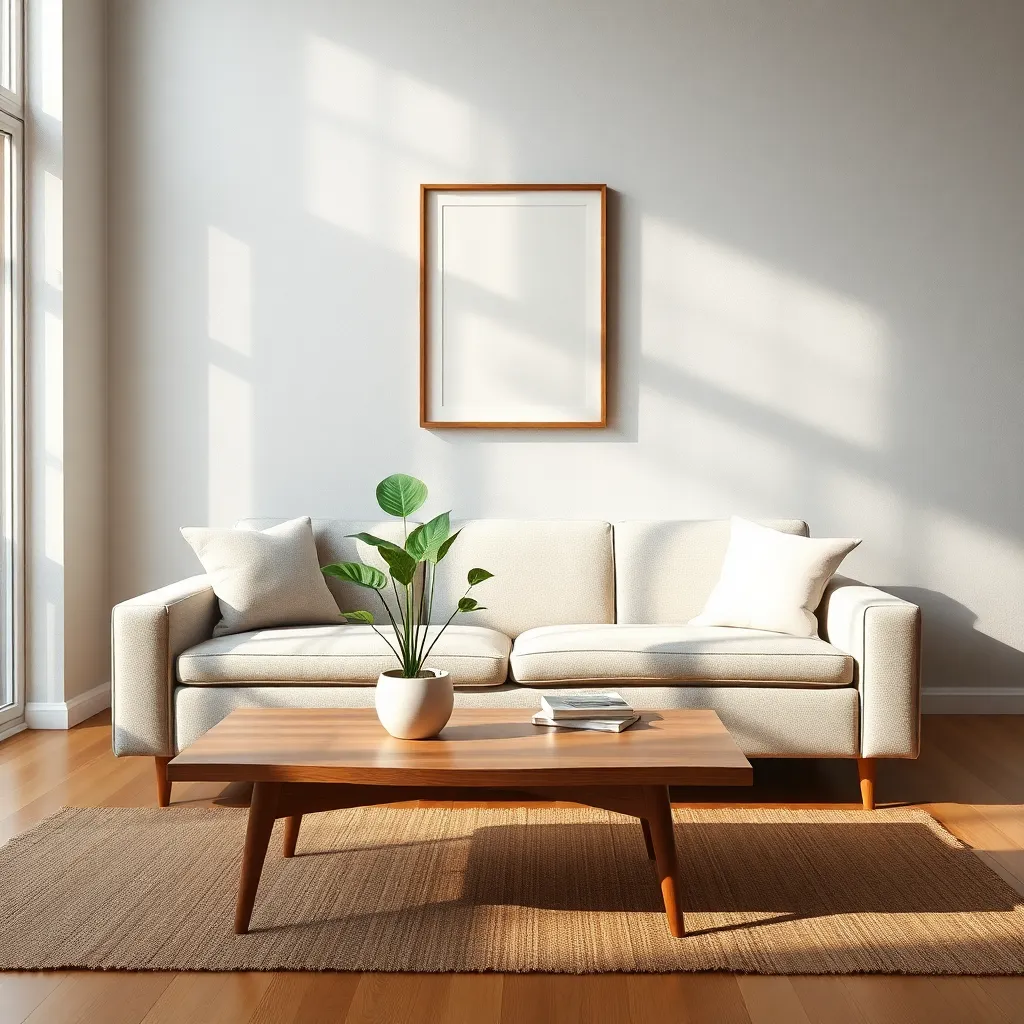
Creating a clutter-free environment is essential to achieving a minimalist home decor style. Begin by evaluating your current space and identifying items that are necessary versus those that are not. Opt for multifunctional furniture that serves more than one purpose, such as a storage ottoman or a bed with built-in drawers, to optimize space. This approach not only reduces clutter but also enhances the utility of your furniture choices.
Consider implementing a neutral color palette to maintain a sense of calm and order. Light shades such as whites, beiges, and soft grays can make a room feel more open and airy, contributing to a clutter-free aesthetic. To add interest without overwhelming the space, introduce texture through materials like linen, wool, or a woven rug. This subtle variety keeps the environment engaging while adhering to minimalist principles.
Storage solutions are vital for maintaining a tidy home. Incorporate vertical storage options like tall bookshelves or wall-mounted cabinets to take advantage of unused wall space. These elements help keep belongings organized and off the floor, contributing to a clean and streamlined look. Floating shelves can also provide a display area for a few carefully chosen decorative items, reinforcing a minimalist approach.
In a minimalist setting, decor should be intentional and meaningful. Select a few statement pieces that reflect your personal style, such as an abstract painting or a sleek sculpture, to add personality without adding clutter. Practice restraint by rotating decorative items seasonally to keep the space fresh and prevent overcrowding. This method ensures each piece gets the attention it deserves, allowing the space to remain simple and serene.
Conclusion: Growing Success with These Plants
In our exploration of minimalist home decor, we uncovered five pivotal relationship concepts: the art of decluttering to create space for meaningful interactions, the power of simplicity to foster clear communication, the importance of intentional design to reflect shared values, the role of calming environments in reducing stress, and the beauty of shared experiences in a harmonious space. By integrating these principles, couples can cultivate a home that not only looks beautiful but also strengthens their bond.
As an immediate step, why not choose one room to simplify together this weekend? Whether it’s clearing out old items or rearranging furniture for a fresh perspective, this can be a fun and bonding experience.
Remember, a successful relationship is built on nurturing both the environment and the connection you share. Bookmark this article now so you can revisit these insights whenever you need a gentle reminder or new inspiration on your journey together.
Embrace the journey of minimalist living with your partner, knowing that each step you take brings you closer to a harmonious and enduring relationship. Here’s to creating a home—and a love—that truly reflects who you are together.
